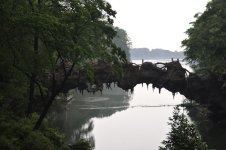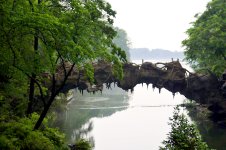DaveKoontz
Senior Member
Although I've been shooting for many years I continually run into to new challenges. This time I could not avoid shooting in a heavily shaded area, with bright mid-day sun
in the background. I really didn't think too much about it during the shoot, but in processing the images, the background was washed out to a point where even post processing techniques won't correct the problem. The foreground/subject matter for the shoot is exactly what I wanted, good saturation, focus, etc. but again the background was a washout. I will most likely run into this situation again but don't have a clue how to adjust the camera, or how other techniques may help avoid, or minimize the contrast issues. Any advice, tip would be greatly appreciated.

in the background. I really didn't think too much about it during the shoot, but in processing the images, the background was washed out to a point where even post processing techniques won't correct the problem. The foreground/subject matter for the shoot is exactly what I wanted, good saturation, focus, etc. but again the background was a washout. I will most likely run into this situation again but don't have a clue how to adjust the camera, or how other techniques may help avoid, or minimize the contrast issues. Any advice, tip would be greatly appreciated.


